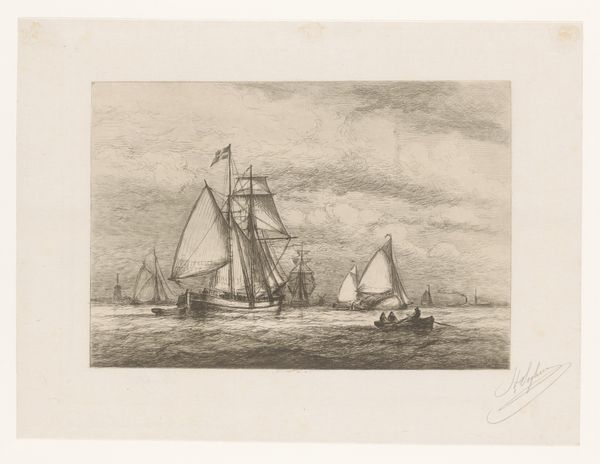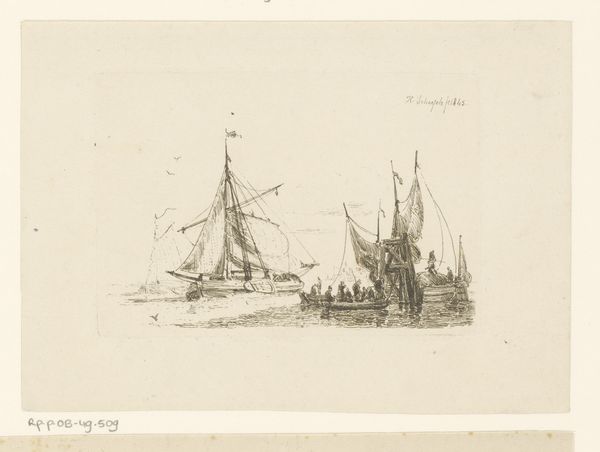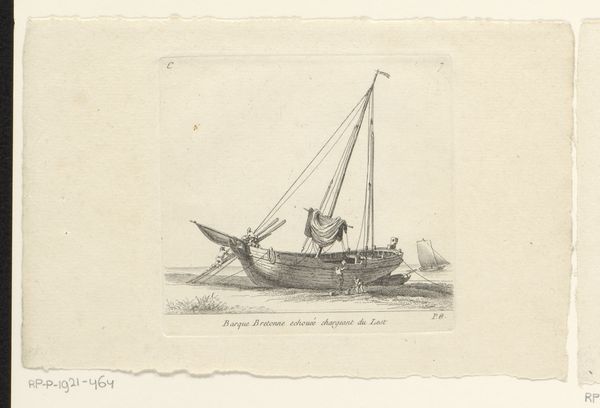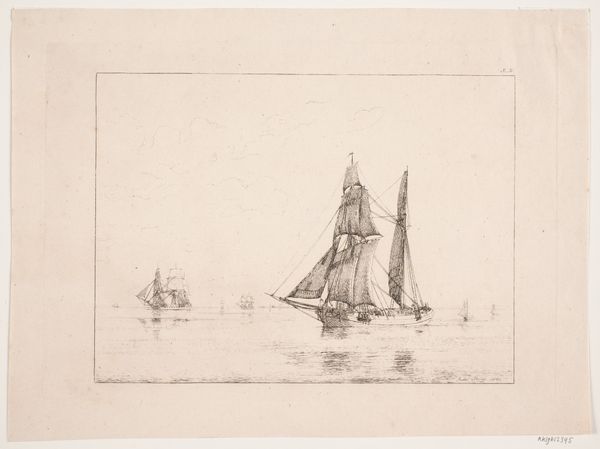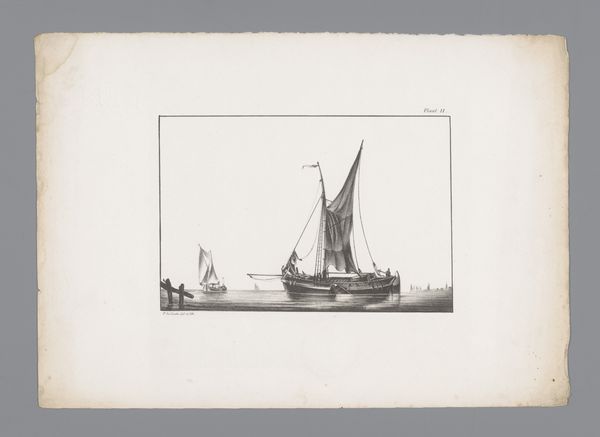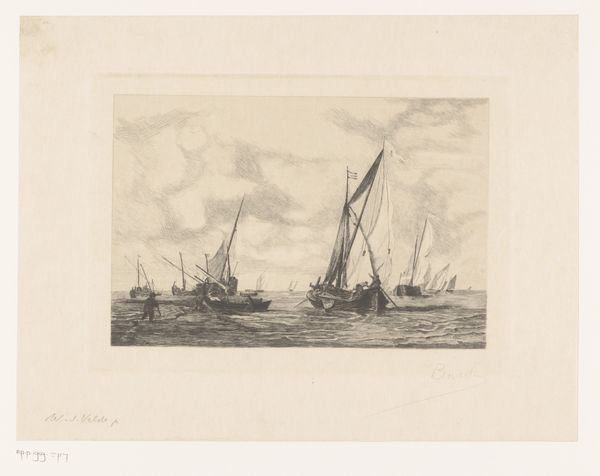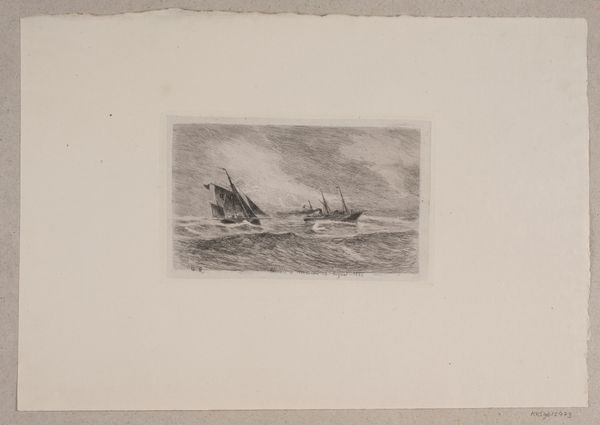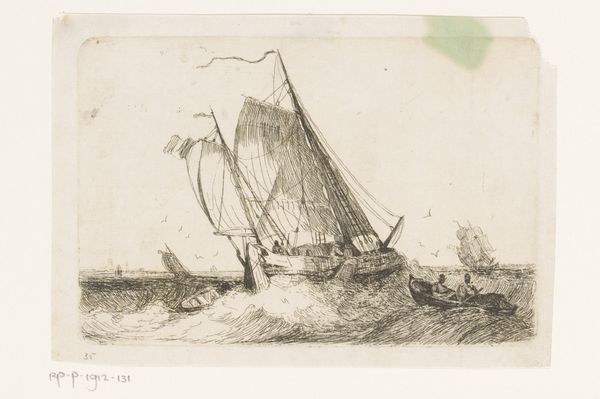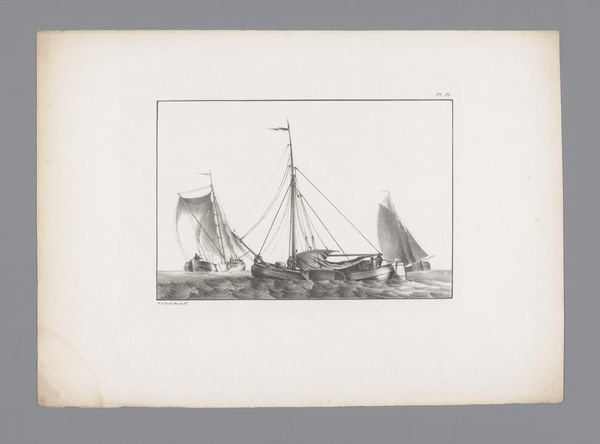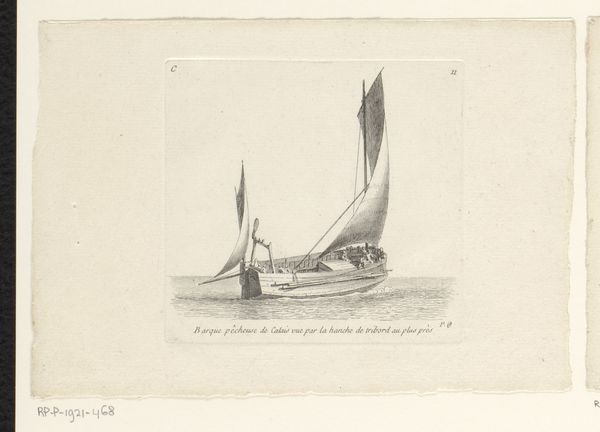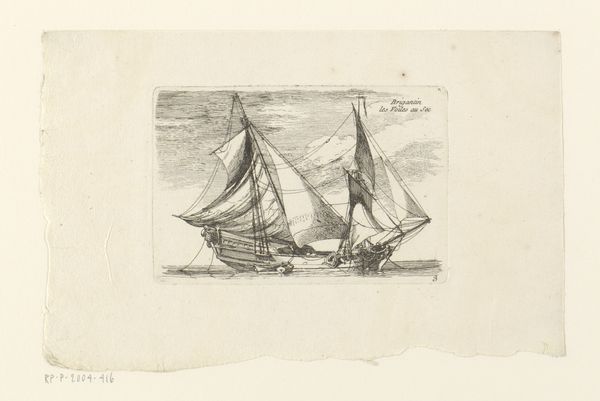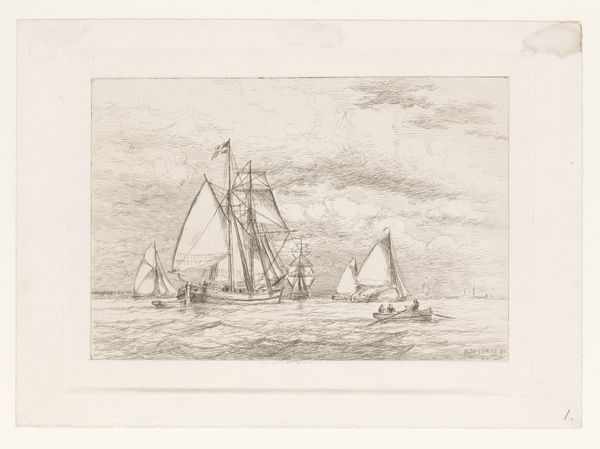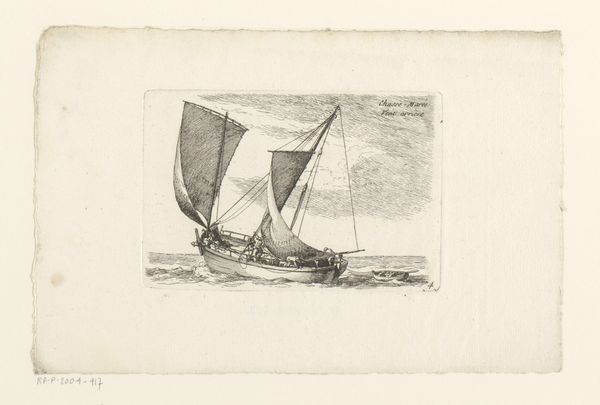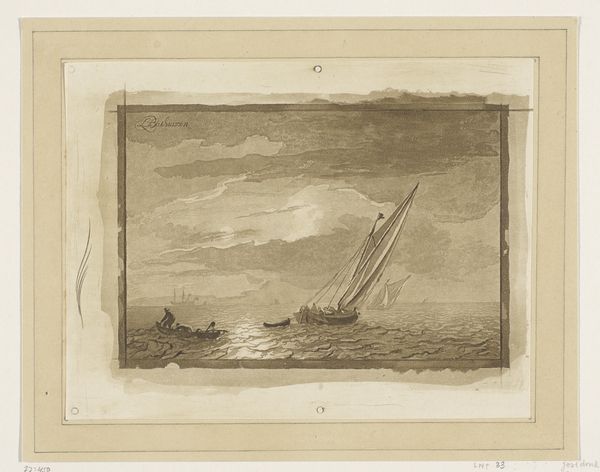
print, engraving
# print
#
landscape
#
etching
#
romanticism
#
engraving
Dimensions: 191 mm (height) x 266 mm (width) (plademaal)
Editor: This print, "Storebælt ved Korsør" by Hermann Anton Friedrich Timm, made sometime between 1800 and 1833 using etching and engraving techniques, presents a calm seascape. The fine lines create a serene mood, but also a kind of distance. What do you see in this piece that might go beyond just a pretty picture? Curator: Beyond the aesthetic qualities, it's crucial to recognize this landscape as a product of its time. Think about early 19th-century Europe: rising nationalism, trade routes, the dawn of industrialization beginning to transform labor practices, including in the maritime sector. The boats aren't merely objects; they signify Denmark's reliance on seafaring and trade. Editor: So the print isn’t just documenting a scene, but it’s reflecting broader social and economic realities? Curator: Exactly. And we should consider access and representation too. Who gets to travel? Who is included in those boats, and who profits from their journeys? Etchings like these were also part of disseminating images and shaping public perception. Consider the context of Danish national identity at that time; is the calm sea representative of something? What is obscured by this tranquility? Editor: I hadn’t thought about it that way, about how the image is constructing a particular narrative. So, it’s less about the technical skill, and more about what that skill *does*. Curator: Both are crucial, but understanding the “what” necessitates interrogating the “why” and the “for whom”. What are the power structures reflected, even subtly, in this seemingly peaceful scene? By considering such matters, we deepen our relationship with the art. Editor: This reframes everything for me. I’m definitely going to look at landscapes differently from now on. Curator: And hopefully consider whose landscapes, whose labor, whose story isn't present within the work too. Art holds many mirrors and reflecting pools; all must be investigated with equity in mind.
Comments
No comments
Be the first to comment and join the conversation on the ultimate creative platform.
